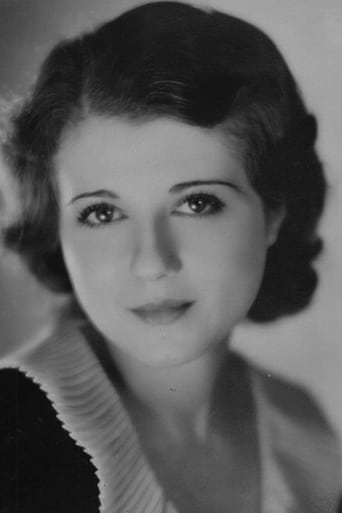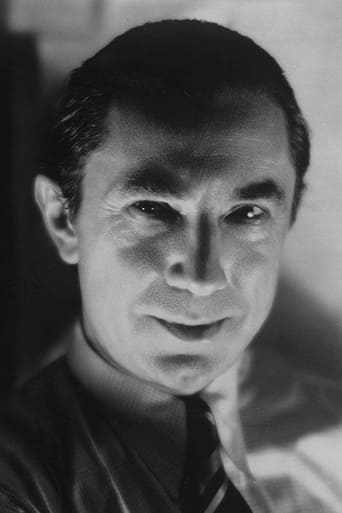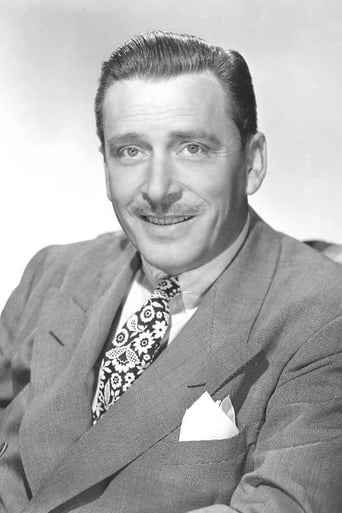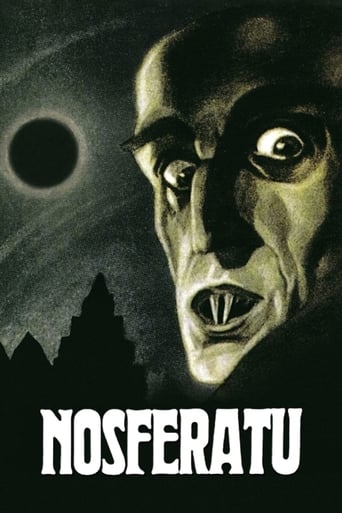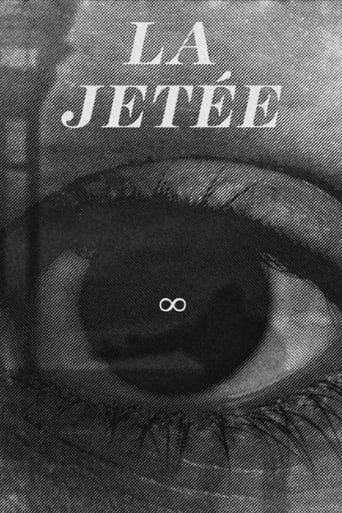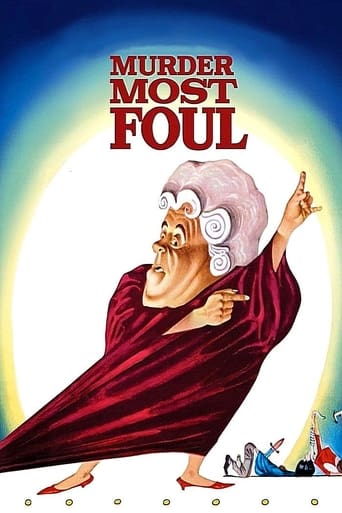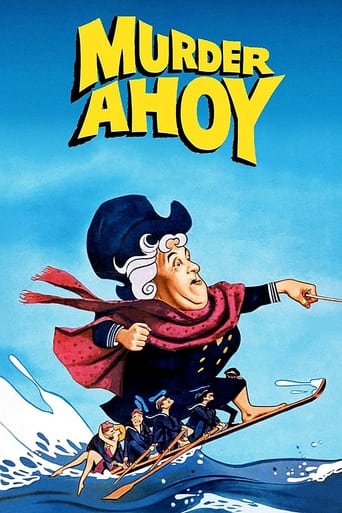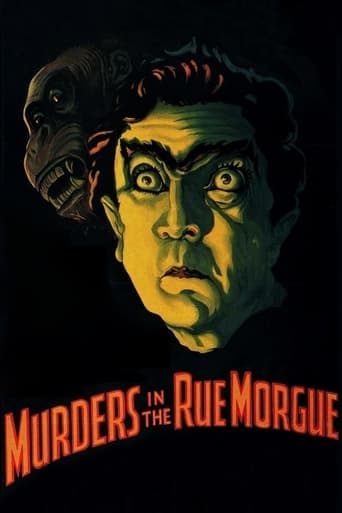
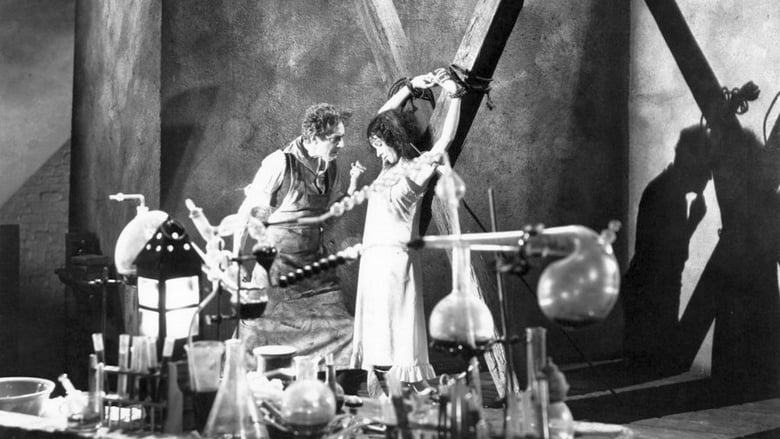
Murders in the Rue Morgue (1932)
In 19th Century Paris, a maniac abducts young women and injects them with ape blood in an attempt to prove ape-human kinship but constantly meets failure as the abducted women die.
Watch Trailer
Cast
Similar titles

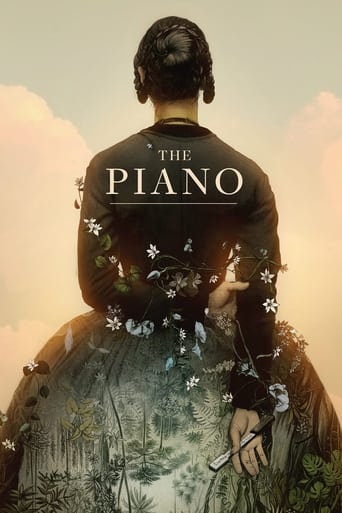
Reviews
Admirable film.
I like movies that are aware of what they are selling... without [any] greater aspirations than to make people laugh and that's it.
There are moments in this movie where the great movie it could've been peek out... They're fleeting, here, but they're worth savoring, and they happen often enough to make it worth your while.
This is one of the best movies I’ve seen in a very long time. You have to go and see this on the big screen.
This movie is tagged with genres horror, crime, mystery and romance. But in none of these aspects it really shines. I think it's a curiosity at best. The only interesting scenes were towards the end when the gorilla abducted the girl and was trying to escape with her over the rooftops. Maybe that scene gave movie makers eventually the idea to make King Kong as it really reminded me a lot of the legendary film ape. Plot and characters are not at all interesting. The character of Dr Mirakle is nice and fitting for Bela Lugosi even though I do prefer him as count Dracula. It's a plot with potential and they try to do make it mysterious even though as viewer we already know from the beginning the intentions of Dr Mirakle. I found it boring and predictable most of the time. There was even a bit of humor in it with the 3 men arguing about the language the suspect spoke which was amusing but served mostly a filler in my opinion. How interesting if Dr Mirakle really succeeded in his experiment, now that would have been interesting!
The movie is loosely based on Poe's short story Murders in the Rue Morgue. It is great to watch if you enjoy the classics.Bela Lugosi is wonderful as the twisted Dr. Mirakle. I love the costuming and overall creepy look they gave to the vile character. He had a good idea to prove evolution (the ape-human link) but the way that Dr. Mirakle goes about proving this theory is pure evil, for what he does to young women is overly cruel. He abducts the women and injects them with the blood of an ape.I would say this movie would be a great double feature with movie classics like "The Invisible Ray", "The Black Cat" or even "The Raven".7.5/10
"Murders in the Rue Morgue" is perhaps the most atmospheric film in the Universal canon, which is really saying something. More then any other, it is deeply influenced by "The Cabinet of Dr. Caligari" and other silent horrors. Paris, as portrayed in this film, is composed of dank homes squeeze into each other, with huge sloping roofs. Triangular buildings stab upwards towards the dreary clouds, dark shapes on the skyline. The entire city is obscured in giant walls of fog. The villain's lair, with its single askew window and slithering staircase is the oddest set in the film. The titular morgue is shown with a huge square at the back, rows of corpses on each side, a sinister black cross hanging overhead. Not to mention the movie's frequent use of shadows. On a purely visual level, "Murders in the Rue Morgue" makes perfect midnight viewing.After Lugosi passed on "Frankenstein," this film was devised as a vehicle for him. It's easy to see why the verbose, speechifying Dr. Mirakle appealed to the actor. Even more sinister then Dracula, Dr. Mirakle is Lugosi at his cruelest, darkest level of villainy. The character is an archetypical mad scientist, obsessed with his bizarre studies, utterly immoral in his scientific pursuits. When the experiments fail, he shouts. He lightly chats with the murderous gorilla and has a dark-faced assistant. A mad evolutionist, Dr. Mirakle injects a prostitute with gorilla's blood, dumping the dead bodies in the river through a trap door. Why the film only implies it, there's definitely a suggestion of bestiality in the doctor's work. Just a few years later, in the post-Production Code era, these topics would undoubtedly be off-limits. Surprisingly, the movie doesn't take any particular stance on evolution. The film's hero, Dupin, is a rational medical student, a believer in crime scene forensics, and intrigued by the mad doctor's theories.Dupin, despite his Kentucky accent, makes for a fairly convincing hero. He has a funny back-and-forth with his roommate, turning down dinner in order to study more. His girlfriend takes up a lot of screen time. Their romance is unremarkable but never annoying. She does work fantastically as a damsel in distress, when being threatened by a glaring Lugosi or kidnapped by the ape. Some of the film's comic relief, such as the no-nonsense morgue attendant, has aged very well while other's aspect, like the xenophobic apartment tenants arguing about their different countries of origin, has aged less well. The movie is incredibly well shot, with a POV shot of a moving swing being my favorite. While the gorilla suit isn't horribly convincing, the film handles it well, only using the suit in long shots and cutting to an actual chimp's face in close-up.At only an hour long, the movie zips by. The chase across the rooftops of Paris makes for a fantastically suspenseful climax. The ape attacks are gruesomely tense, while the scene of Dr. Mirakle abducting the prostitute is still creepy. The simple, compact story makes the inevitable conclusion, the mad scientist's creation rebelling against him, deeply satisfying. "Murders in the Rue Morgue" is a surprisingly grim gem from horror's golden age.
I saw "Murders in the Rue Morgue" when I was just a child in the sixties and wasn't impressed. But now that I've seen the uncut original on Universal's Lugosi collection, I believe "Murders" is one of the most under-rated films from the golden age of horror.Direction by Robert Florey, cinematography by Karl Freund, and art direction by Charles Hall will satisfy the cravings of atmospheric horror fans. And the sources that Florey uses—the Poe story and the silent classic "The Cabinet of Dr. Caligari"—dovetail nicely. What seems rather silly in the Poe story (an ape escapes from a sailor to commit senseless murder) is more plausible and horrific when the ape's owner becomes Dr. Mirakle, a mad scientist intent on proving humans and apes are evolutionary cousins. Why else inject ape's blood into nubile young women if not to find a suitable mate for his side show attraction Erik? I was also impressed by the way director/writer Florey zeroed in on one of Poe's themes. The confusion of tongues scene from Poe's story in which people of different nationalities (ear-witnesses to a murder) mistake the ape's language for unintelligible human speech, demonstrates that humans are no different from Erik, another species of savage primate inhabiting the planet. Seeing Dr. Mirakle talk with Erik and translate for the carnival audience doesn't seem as far-fetched today considering the recent research into primate communication.These thematic elements, together with Lugosi's sinister but surprisingly low-key (for him) performance, and the scene in which Dr. Mirakle injects the street walker with ape blood (Arlene Francis made a good screamer), and in which fiendish assistant Noble Johnson (who made an art of playing such roles) cuts the ropes that bind her Christ-like between crossbeams, releasing her body through a trap door into the river, make this one of the most daring of pre-code horror films.The print Universal included in its Lugosi collection looks fine, much better that the one I saw in the sixties. And neither the bland performances of the romantic leads, nor the man in the ape costume detracts from the over all effect. The inter-cutting between the actual animal and the costumed double is really not that jarring when you consider what was being done elsewhere in this era.
